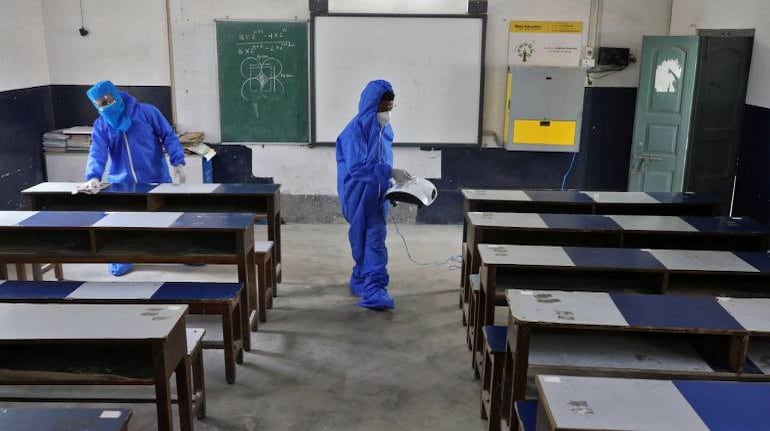
COVID impact | Health Ministry issues SOPs for skill training institutes, technical programmes of higher educational institutes
In the SOP for conduct of teaching activities in classroom, it mandated a distance of 6 ft between chairs and desks, and that classroom activities should be staggered with separate time slots
by Moneycontrol NewsThe Ministry of Health and Family Welfare on September 13 issued standard operating procedures (SOP) for skill training institutions and higher education institutions conducting courses in technical programmes requiring lab work to be permitted from September 21.
In the SOP for conducting teaching activities in classroom, it mandated a distance of 6 ft between chairs and desks, and that classroom activities should be staggered with separate time slots.
According to the SOP released, academic scheduling should have a mix of regular classroom teaching, online teaching or assessments.
COVID-19 Vaccine
Frequently Asked Questions
View more
How does a vaccine work?
A vaccine works by mimicking a natural infection. A vaccine not only induces immune response to protect people from any future COVID-19 infection, but also helps quickly build herd immunity to put an end to the pandemic. Herd immunity occurs when a sufficient percentage of a population becomes immune to a disease, making the spread of disease from person to person unlikely. The good news is that SARS-CoV-2 virus has been fairly stable, which increases the viability of a vaccine.
How many types of vaccines are there?
There are broadly four types of vaccine — one, a vaccine based on the whole virus (this could be either inactivated, or an attenuated [weakened] virus vaccine); two, a non-replicating viral vector vaccine that uses a benign virus as vector that carries the antigen of SARS-CoV; three, nucleic-acid vaccines that have genetic material like DNA and RNA of antigens like spike protein given to a person, helping human cells decode genetic material and produce the vaccine; and four, protein subunit vaccine wherein the recombinant proteins of SARS-COV-2 along with an adjuvant (booster) is given as a vaccine.
What does it take to develop a vaccine of this kind?
Vaccine development is a long, complex process. Unlike drugs that are given to people with a diseased, vaccines are given to healthy people and also vulnerable sections such as children, pregnant women and the elderly. So rigorous tests are compulsory. History says that the fastest time it took to develop a vaccine is five years, but it usually takes double or sometimes triple that time.
"Teaching faculty to ensure that they and students wear masks throughout teaching activities," the SOP added.
Sharing of laptops, notebook, stationary etc among students has also been disallowed.